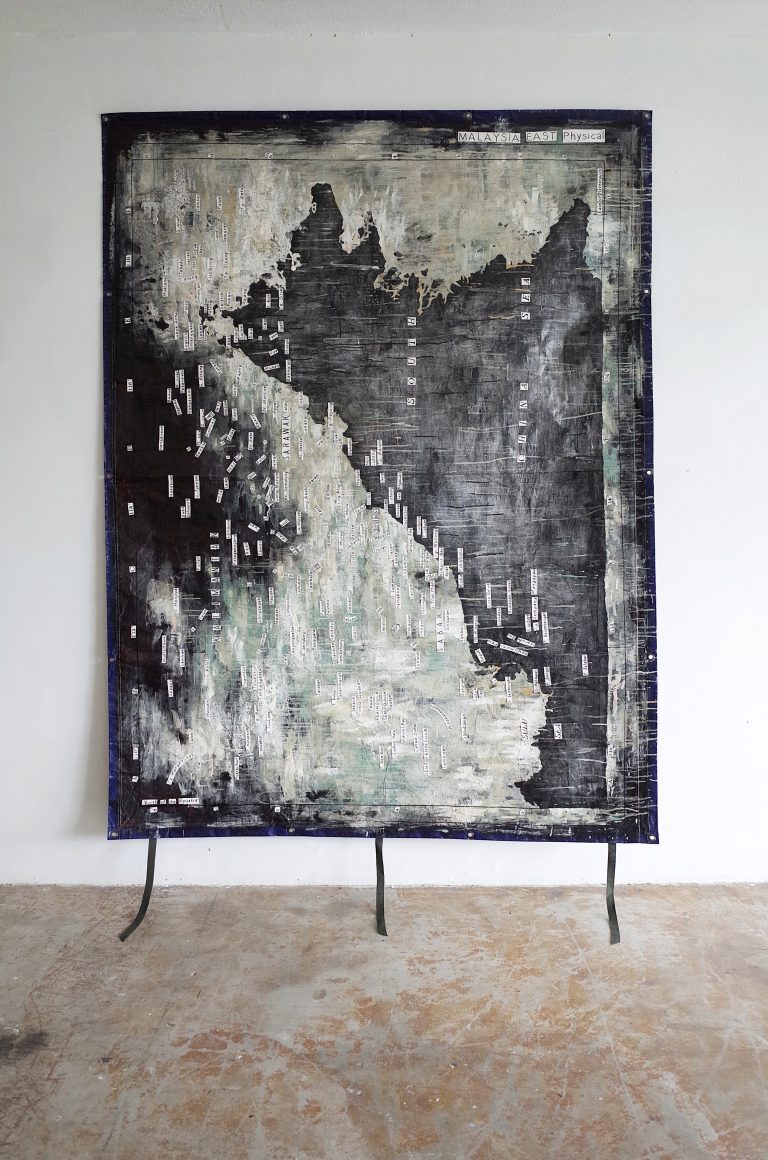We acknowledge the Traditional Owners of the land on which the Queensland Art Gallery | Gallery of Modern Art stands and recognise the creative contribution First Australians make to the art and culture of this country.

Chong Kim Chiew / Malaysia b.1975 / Boundary Fluidity #25 2021 / Synthetic polymer paint, marker and canvas on tarpaulin / 240 x 180cm / Purchased 2021. QAGOMA Foundation / Collection: QAGOMA / © Chong Kim Chiew
Chong Kim ChiewBoundary Fluidity #25 2021
Not Currently on Display
The towering maps painted on tarpaulin that comprise Chong Kim Chiew’s ‘Boundary fluidity’ series express the artist’s compulsive reorientation of geographic and political topography of Malaysia and its South-East Asian neighbours. Their large-scale, scroll-like forms enable both spatial installation and performative intervention.
Chong describes ‘Boundary fluidity’ as a deliberate misinterpretation of cartography. He works in layers of paint pours and intersecting lines, erasing and re-inscribing names, borders and topographies. Painted on waterproof tarpaulin, the works can be rolled and carried like traditional maps, and potentially — though counterintuitively — followed. This form also lends itself to presentation in a range of ways, including suspension; presented en masse, the maps take on a sculptural aspect, some hanging grandly in space, others rolled tightly, propped against walls. An accompanying video documents the tarpaulins in everyday sites — a car park, a balcony, a beach — what the artist calls ‘third spaces’, familiar yet anonymous.
Chong deconstructs representations of the idea of nation, inviting consideration of their historical, metaphorical and theoretical aspects. These works introduce an element of impermanence into the structure of the nation-state: territory becomes an aesthetic and political fiction that is anything but eternal, suggesting that the control of geographies and populations is temporal, and that symbols of power ― such as maps ― could outlast the power itself.
Chong Kim Chiew is known for his mischievous, thought-provoking works across a wide range of artistic media and materials. Common threads throughout his practice include a general focus on the idea of nation as an ideological, political and aesthetic construct, and a twofold reading of the word ‘trace’ as both an artistic technique and a vestige or remnant.
Born and raised in Malaysia, Chong chose to pursue his art studies in China, relocating to Guangzhou to undertake a degree in oil painting at the Academy of Fine Art. While studying, he became aware of the powerful strain of ridicule in Cantonese art and his artist friends’ rich knowledge of local histories. This inspired him on two levels: to make ‘attitude’ the centre of his practice with an emphasis on finding different ways to create and show work; and to immerse himself more deeply in the history of Malaysia, within the federation’s complex ethnic fabric, particularly in terms of his own Chinese heritage.